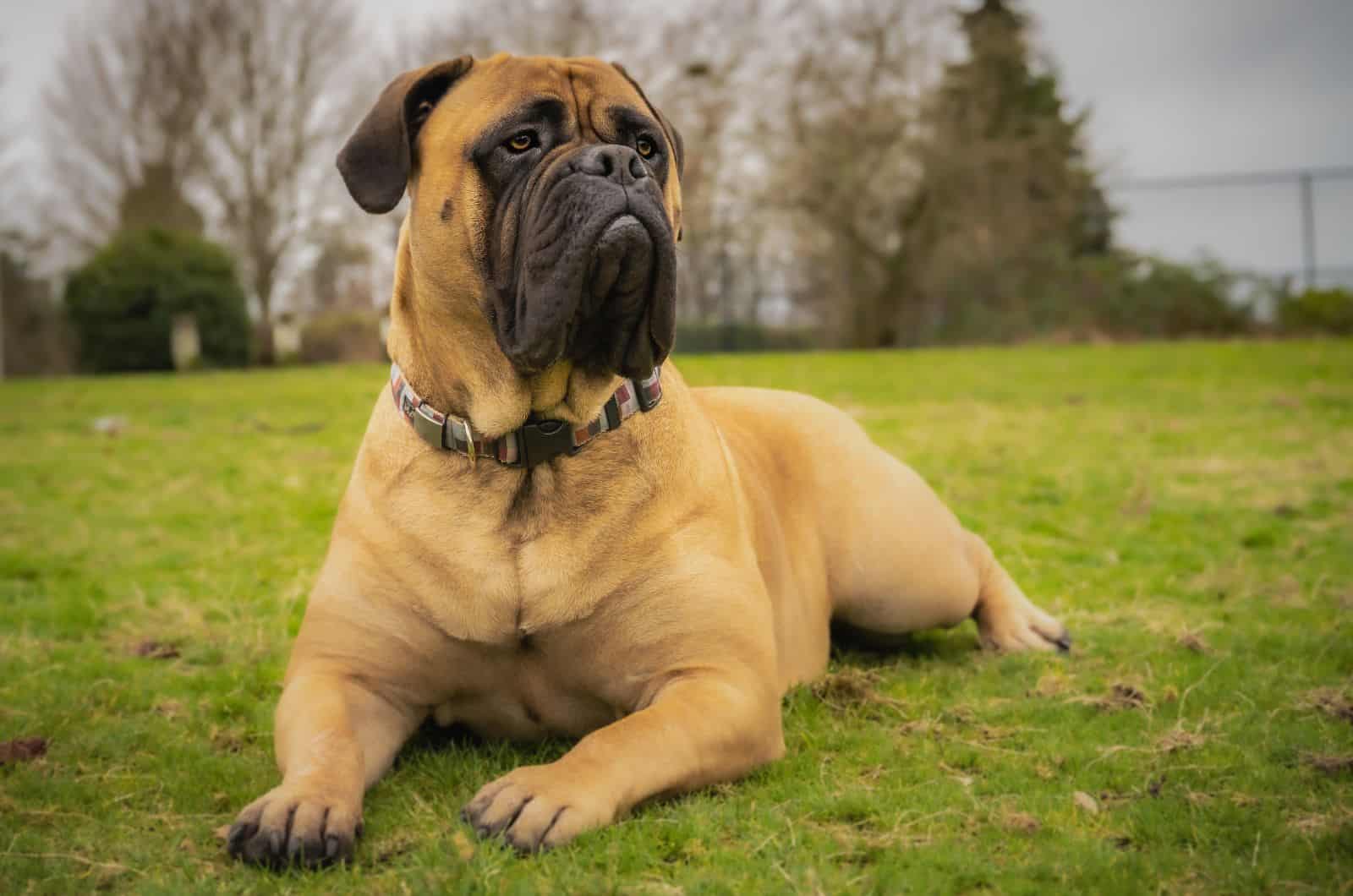If you’re thinking about bringing a Bullmastiff puppy into your home or if you currently have one as a pet, it’s always a good idea to know what you can expect in terms of its size. One of the easiest ways to stay on top of that is to have a Bullmastiff growth chart.
A growth chart is a fantastic utility that helps you make sure that you have enough space for the dog and enough money set aside to cover the food expenses, which can add up pretty quickly for a dog that likes to eat a lot.
Unlike small dog breeds, or even medium-sized dogs, Mastiffs generally need a lot of space to be comfortable and to be able to move around freely.
In general, Bullmastiffs can reach their ideal height and weight with proper nutrition, exercise, and health. The size of these canines will likely be predetermined by additional criteria including gender, genetics, and procedures, so you should be aware of these.
We will be going into more detail about all of those later on in the article, but for now, let’s move on to the Bullmastiff growth chart.
Bullmastiff Growth Chart
[table id=674 /]
[table id=675 /]
Bullmastiff Growth Through Stages Of Development
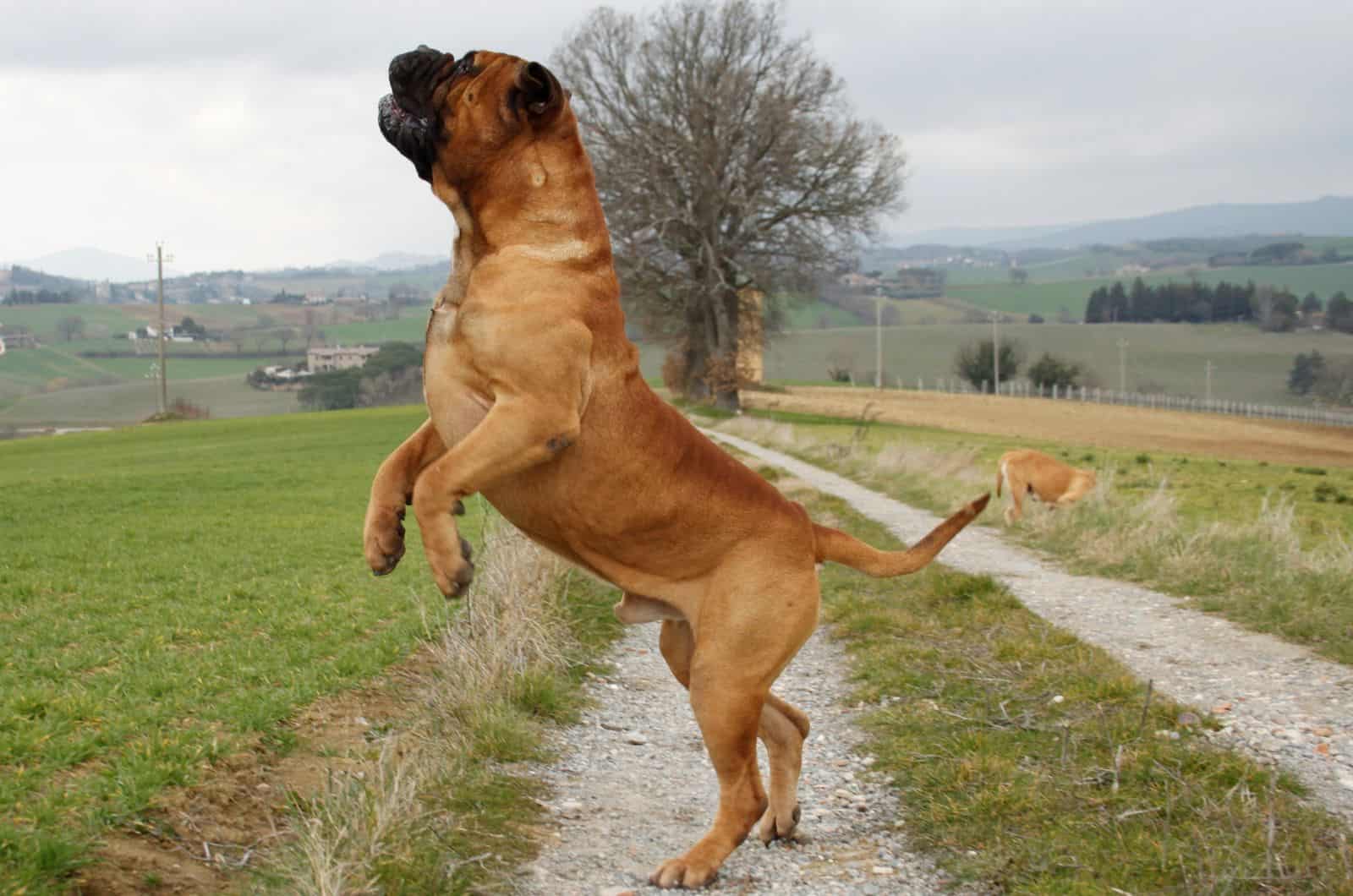
The Bullmastiff weight and height charts above are useful when you want a quick overview of their size through the months, but what if you need a little more detail than that?
In this part of the article, we have segmented the Bullmastiff’s development through the first eighteen months of its life into distinct stages.
Related: 29 Best Mastiff Breeds That Can Be Good Family Pets
We will talk about what exactly happens in each stage and how it affects the growth rate of the puppies. This will give you a great idea on what to expect during the first year and a half of owning a Bullmastiff, so we sincerely recommend that you read it.
From Birth To Two Weeks Old
A newly born Bullmastiff puppy has to be fed at least every two hours throughout the day. Due to the breed’s rapid development rates and large litter sizes, supplemental bottle feeding may be required in addition to the mother’s milk for all puppies.
The mother will lick her babies to induce elimination during this period. If she doesn’t do this, the dog owner will have to step in a little bit, which is okay because it’s a crucial part of the breed’s early socialization process.
Read next: How To Make Puppy Mush + 3 Recipe Ideas To Make It Yummier
From Three Weeks Old To Three Months Old
The dog mother will start to regurgitate her food at this point for her offspring to consume. This indicates that you can begin giving the puppies high-quality puppy food that has been softened.
By the time they are into their second month, they should be able to eat solid puppy food.
Puppies are prepared to eat adult food when they are 12 weeks old. The dogs should be fed twice daily to prevent them from overeating and developing bloat.
From Four Months Old To Nine Months Old
At five months old, you can begin taking your dog for daily walks that last about 30 minutes.
At this stage, these dogs don’t require a lot of activity, but it’s a good idea to provide your puppy with enough attention and mental stimulation by giving it chew toys or playing fetch with it.
Bullmastiffs grow quickly and weigh a lot. In order to prevent injury, watch out for your dog’s weight gain and avoid over-exerting it.
At nine months old, begin socializing your Bullmastiff. For example, you can take him along with you while you run errands to help him become used to new surroundings, sounds, and people.
From Ten Months Old To Eighteen Months Old
Your Bullmastiff will keep developing at this stage, particularly its skeleton. However, the growth rate will be much lower.
Just to remind you, Bullmastiffs are not very good athletes so don’t take your dog on lengthy or demanding hikes. That might overwork them and hinder their development, so it would probably be better to take them on shorter walks, but more frequently.
A brisk 15-minute stroll should be ideal for your Bullmastiff. Try doing it twice a day, once in the morning and once in the evening. Aside from giving both you and your dog a lovely little exercise, it will also establish a routine that the pup can look forward to every day.
And there really is no substitute for routine when it comes to training and disciplining your dog.
Fully Grown Bullmastiff
Due to their large size and muscular build, adult Bullmastiffs serve as a natural deterrent to potential attackers. The Bullmastiff uses his height and commanding presence to deter trespassers rather than barking at them.
These dogs don’t have a lot of energy and only require a few brief daily walks. One of the reasons Bullmastiffs adapt well to apartment living is that they don’t have the need to constantly buzz around.
However, they still need enough space to feel comfortable, as well as enough activity to keep their mental and physical fitness levels up. Even though they are about the same size as English Mastiffs, they are slightly more active.
They won’t be jumping across your fence and onto the street, but they will want to stretch their legs every once in a while, so it’s important that you give them to the opportunity to do that.
Factors That Determine Bullmastiff Growth
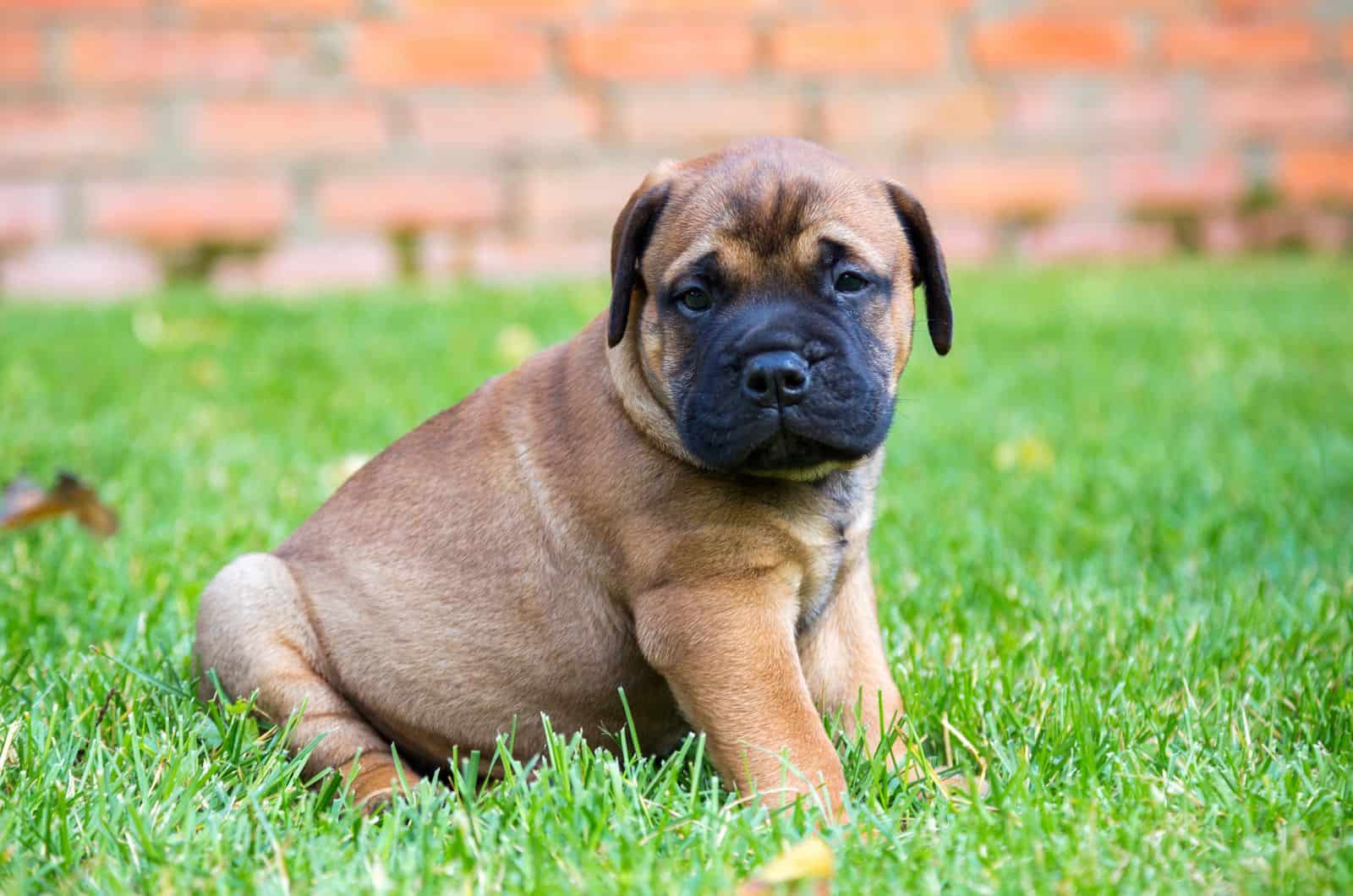
Not every Bullmastiff will end up being the same height and weight, which is apparent from the charts at the start of this article.
The values in the chart aren’t exact, rather they are ranges that leave some wiggle room for each Mastiff. That’s because there are so many different factors that ultimately shape the development of the puppies that it’s impossible to predict within an inch or a pound.
Knowing what the most impactful factors are can help you have a better understanding and even a little bit of control over your puppy’s growth. In some cases, it can even help you spot irregularities or potential health risks while it’s still early.
Some of those factors, like genetics and gender, are, of course, beyond your control and you can’t do anything to change them. However, knowing them in advance lets you better prepare for what’s to come.
Genetics
Genetics dictate a lot of things in all dog breeds, including Bullmastiffs. Their genes play a part in determining their coat color, health, behavior, and indeed their size.
The size of a Bullmastiff is directly influenced by its genetic makeup, so you can get a decent idea of the size of the puppies by observing the birth parents’ sizes.
You can probably determine how big the offspring will be once they reach adulthood based on the size of the parents. If the parents of your Bullmastiff were small, your companion might grow to be on the smaller side, as well.
By the same token, if the Mastiff parents were bigger than usual, there is a good chance that their puppies will also be above-average in size.
For this reason, you should always see the parents before finalizing the purchase of a puppy from a breeder. Studying the parents of your Bullmastiff will teach you a lot.
Gender
In general, male Bullmastiffs tend to be taller and heavier than their female counterparts. Therefore, you shouldn’t realistically expect a female puppy to outgrow a male.
It can occasionally happen, although it’s very rare and practically never occurs within the same litter.
Once they reach adulthood, male Bullmastiffs are typically about two inches taller and ten pounds heavier on average than female Bullmastiffs.
That isn’t a massive discrepancy, relatively speaking, but it’s big enough to represent a visible difference. You can usually tell apart a male Bullmastiff from a female just by looking at them, and that’s mostly because of their size.
Nutrition
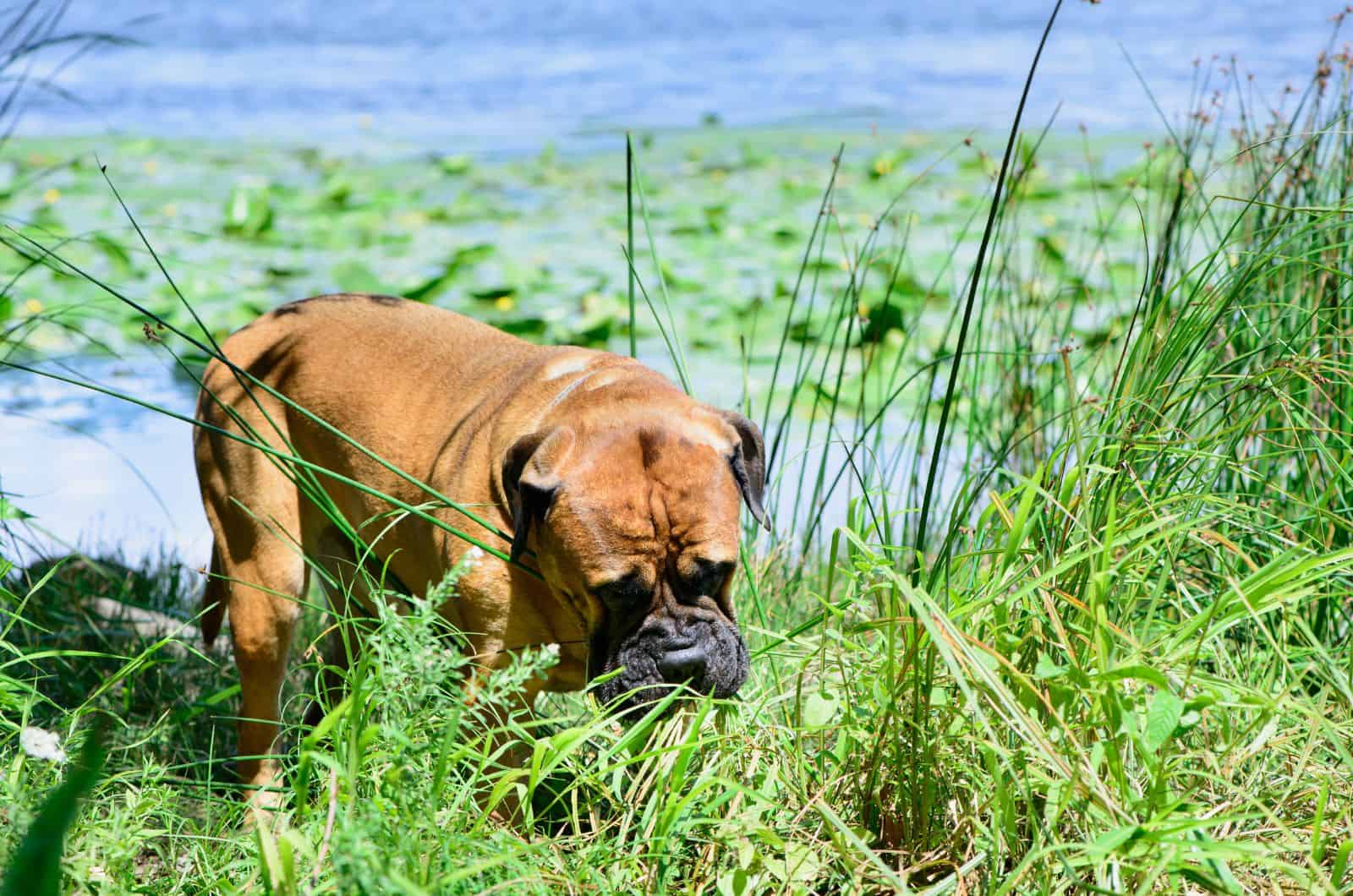
How well your Bullmastiff grows will depend on the type of food he eats. At first, Bullmastiff puppies eat nothing but their mother’s milk, which is filled with all the nutrients they require to develop.
You have to make sure that the pups continue to receive these nutrients after they stop nursing. A balanced diet will guarantee that your Bullmastiff develops steadily until it reaches full maturity.
The benefits of premium, high-quality dog food that is balanced and contains all the necessary nutrients for Bullmastiffs are too great to be ignored. Therefore, providing a good diet for your pooch should be high on your list of priorities.
If you have any doubts about what the right dog food might be, you can always ask your vet for advice. A balanced diet created specifically for your dog by your veterinarian will give its body the nutrients it needs to function properly.
Your little canine friend will be more susceptible to illnesses, infections, and weariness without those nutrients. Additionally, it could go through some developmental issues, which would prevent it from growing to its appropriate size.
Whether you end up giving your puppy raw food or store-bought kibble, the most important nutrients that you need to make sure your dog is consuming are proteins, healthy fats, carbs, vitamins and minerals, as well as plenty of water.
Exercise
The amount of exercise a Bullmastiff receives will also impact its size. If it eats the right foods but doesn’t get the required amount of activity, it will inevitably grow quite large.
So, in order to maintain a healthy weight, Bullmastiffs need the proper amount of activity.
A developing Bullmastiff puppy should always prioritize exercise in its daily life.
Not only will it help your dog maintain a healthy weight, but it will also strengthen its bones and muscles while enhancing its cardiovascular health. This is important because Bullmastiffs need to build strength in their legs, in order to handle large amounts of walking and other physical activity.
However, you need to take care not to overwork your puppy. Its muscular growth may be hampered by physical overexertion, which will bring more harm than good in the long run.
Health
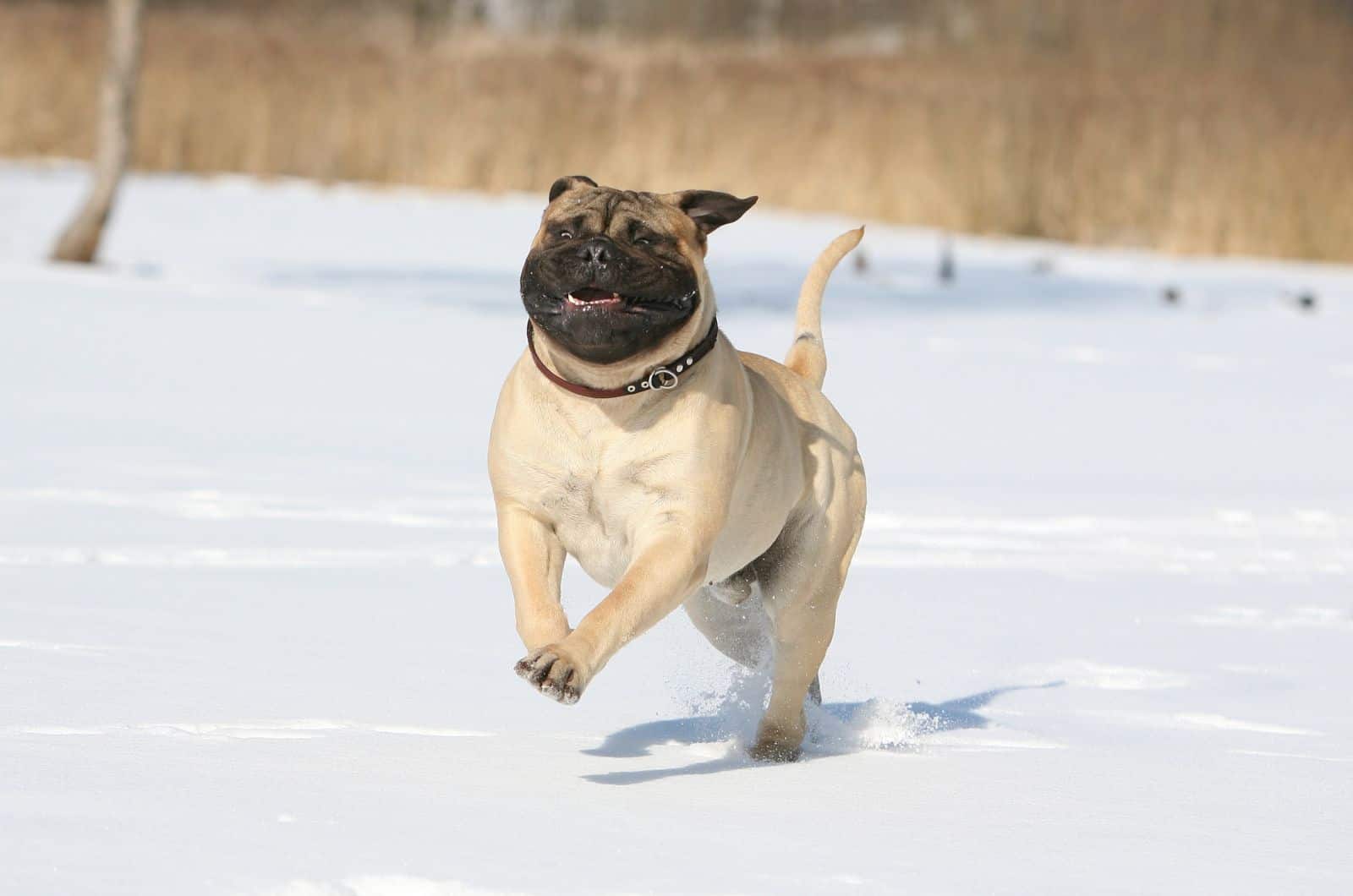
Bullmastiffs will develop fairly normally as long as they are healthy. However, there is a number of medical conditions that can affect their weight and impact their growth rate.
A Bullmastiff can sometimes gain too much weight as a result of conditions like hypothyroidism, while it can lose too much weight as a result of hyperthyroidism and cancer. Additionally, endoparasites are a significant factor in canine undergrowth.
These kinds of situations can be fixed by taking hormone replacement therapy pills as instructed by the vet. Early detection will help your dog avoid the potentially hazardous symptoms that these common illnesses can bring on.
Generally speaking, your Bullmastiff’s health will benefit immensely from routine visits to your vet.
Any sickness that manifests early on can be identified and treated before it becomes too complicated, and even though they are a relatively healthy dog breed, you can never be too safe with these things.
Hypothyroidism
The thyroid gland controls how quickly the body burns through food. The body’s metabolism is decreased if the thyroid is underactive, and that is called hypothyroidism.
Almost all of the body’s organs are impacted when the metabolic rate lowers. Some of the symptoms that are seen in the majority of hypothyroid dogs include lethargy, increased weight, and little desire to exercise without an increase in hunger.
Although treatable, hypothyroidism cannot be cured. Thyroid replacement hormone is administered orally to treat it. The dog will require this medication for the remainder of its life.
Hyperthyroidism
Hyperthyroidism is the opposite of hypothyroidism and it happens when the thyroid gland is overly active, which causes the metabolism to work too quickly.
Symptoms of this illness include severe weight loss and a noticeable increase in appetite in dogs.
The best course of treatment is typically surgery to remove the thyroid tumor, but it can occasionally be treated by certain prescription medication. However, these treatments usually last for the entire duration of the dog’s life.
So if you notice that your dog is hungrier and eating more than before, but its weight seems to be dropping, that might be a sign of this vicious health condition. In that case, you should always take your Bullmastiff to the vet and do a detailed checkup.
Related: What To Feed A Sick Dog With No Appetite: We Are Here To Help You
Bullmastiff Growth Chart FAQ
If you are a Bullmastiff owner or you’re just looking to become one, then this Bullmastiff growth chart will surely be a useful tool for you.
You can use it to predict the size of your puppy throughout its development and you can also make sure that it stays within the healthy weight range by carefully tailoring its diet and exercise regime.
In addition to that, some of the extra information that we have provided will give you a good idea of what to expect from a Bullmastiff puppy in various phases of its development.
However, there are still certain questions and issues that we haven’t covered. Therefore, we decided to put them all in an FAQ section that is simple, clear, and easy to navigate.
If you have a specific question about the Bullmastiff growth chart and need a quick answer, then this is perfect for you.
Why Do I Need A Bullmastiff Growth Chart?
One of the most important aspects of dog ownership is keeping track of a puppy’s development throughout those early formative months. The Bullmastiff is a large dog, so you need to account for the space they will require to walk around.
By utilizing our Bullmastiff growth chart as a kind of weight calculator, and doing frequent weighings, you can keep tabs on your puppy’s development and ensure that its weight is moving in the appropriate direction.
Not to mention all the other things that require your attention, such as nutrition, physical activity levels, training, etc. You can plan your Bullmastiff’s diet, living quarters, and your budget by knowing how big and heavy it should be at a specific age.
And since Bullmastiffs are pretty expensive as it is, finding ways to cut some costs is always a bonus.
How Big Do Bullmastiffs Get?
Bullmastiffs are one of the largest, most imposing dog breeds in the world. As per the data from the size chart, a fully grown male Bullmastiff can reach a maximum height of about 27 inches, and weigh anywhere up to 130 pounds.
Female Bullmastiffs, on the other hand, are slightly smaller and lighter. Their maximum adult height is 26 inches, whereas their top recommended weight is 120 pounds.
Of course, there are exceptions and some Bullmastiffs will go beyond these numbers, but that as long as it’s not too big of a discrepancy, they will be fine.
When Do Bullmastiffs Stop Growing?
Bullmastiffs typically continue growing in physical stature until they are about two-and-a-half years old.
Most giant breeds take a bit more time to fully develop simply because their bodies are so big. Small or medium-sized dogs can complete their growth cycle even before 18 months of age, but large breeds continue far beyond that.
It’s interesting how Bullmastiffs don’t stop growing for about a quarter of their entire lifespan, which is usually predicted to be no longer than eleven years.
How Fast Do Bullmastiffs Grow?
Even though they are so massive, Bullmastiffs don’t grow at a particularly high rate. That’s why it takes them so long to complete their development.
Their biggest growth spurts happen within the first two or three months of their puppyhood, and the subsequent development happens at a medium pace, but lasts well past their second birthday.
Does Spaying/Neutering Affect Bullmastiff Growth?
There are some misconceptions regarding how spaying or neutering a dog before puberty might result in reduced growth.
The truth is that undergoing these treatments actually makes dogs taller and can create a wide range of issues down the road. Early spaying and neutering of Bullmastiffs have numerous benefits, but there are also many hazards.
So, when is the best time to spay or neuter a Bullmastiff?
Well, for females, it’s best to wait until her first heat cycle has passed. And when it comes to males, it’s generally advised to wait until well beyond their second birthday to become neutered.
This is due to the fact that Bullmastiffs do not develop to their full size in nine to eighteen months as smaller breeds do. Hormones produced by the testicles and ovaries as individuals mature control the development and structure of their bones.
Neutering or spaying Bullmastiffs earlier than their second year will result in complications because they still have some growth to accomplish.
Related: 9 Signs Your Dog Needs To Be Neutered
Is Bullmastiff The Largest Dog Breed?
While it’s tough to exactly specify which dog breed is number one when it comes to size, it’s fair to say that the Bullmastiff is in the conversation.
Bullmastiffs are listed by the American Kennel Club (AKC) as one of the sixteen largest breeds in the world, which is a list that includes breeds such as the Irish Wolfhound, Dogue de Bordeaux, Tibetan Mastiff, Great Dane, and others.
How to Measure Your Bullmastiff’s Height?
It won’t be as simple to determine your Bullmastiff’s height as to determine its weight. You’ll need a little more information and some skills to be able to pin it down correctly.
Knowing your Bullmastiff’s height can be useful for a variety of reasons. You may need it for its medical records, or to be able to purchase appropriate accessories, such as crates, beds, doggy doors, etc.
Just remember, when measuring a dog, go up from its paws to its withers, not the head.
Here are the steps on how to do it:
1. Place your Bullmastiff straight next to a doorframe or a wall.
2. Find your Bullmastiff’s withers.
3. Put a carpenter’s level across the dog’s withers and make sure it’s laying flat.
4. Mark the height of the withers on the wall or doorframe with a pencil.
5. Measure the distance from the floor to the pencil mark.
What If My Bullmastiff Is Underweight/Overweight?
When your Bullmastiff is overweight or underweight, it is generally easy to tell. If you regularly record your Bullmastiff’s weight, you are in a position to easily determine whether its weight has fluctuated into a dangerous range.
However, body mass is not necessarily the main indicator of how heavy your dog should be.
By closely examining your Bullmastiff, you can determine whether it’s gained or lost too much weight. The main signs are usually located on its ribs, waist, shoulders, and even hips.
Your dog is underweight if there is too much visible bone when you look at him.
However, the eyes alone cannot do the job properly. You’ll need to feel your Bullmastiff’s body with your hands. Your dog is overweight if you can’t feel the bones in those joints.
If you find out that your Bullmastiff is overweight or underweight, then your veterinarian is best-equipped to assist you. They will be able to determine if there is a medical reason behind the sudden change in the weight.
If your dog’s diet is the problem, you will have to make the required adjustments. The key here is understanding when to feed your dog more or fewer calories.
Your dog may be overweight if it consumes high-calorie foods without getting enough activity to burn the additional calories. Likewise, if your Bullmastiff is underweight, the opposite is true.
Read Next: My Puppy Is Always Hungry: 5 Reasons For This & How To Help
Final Thoughts
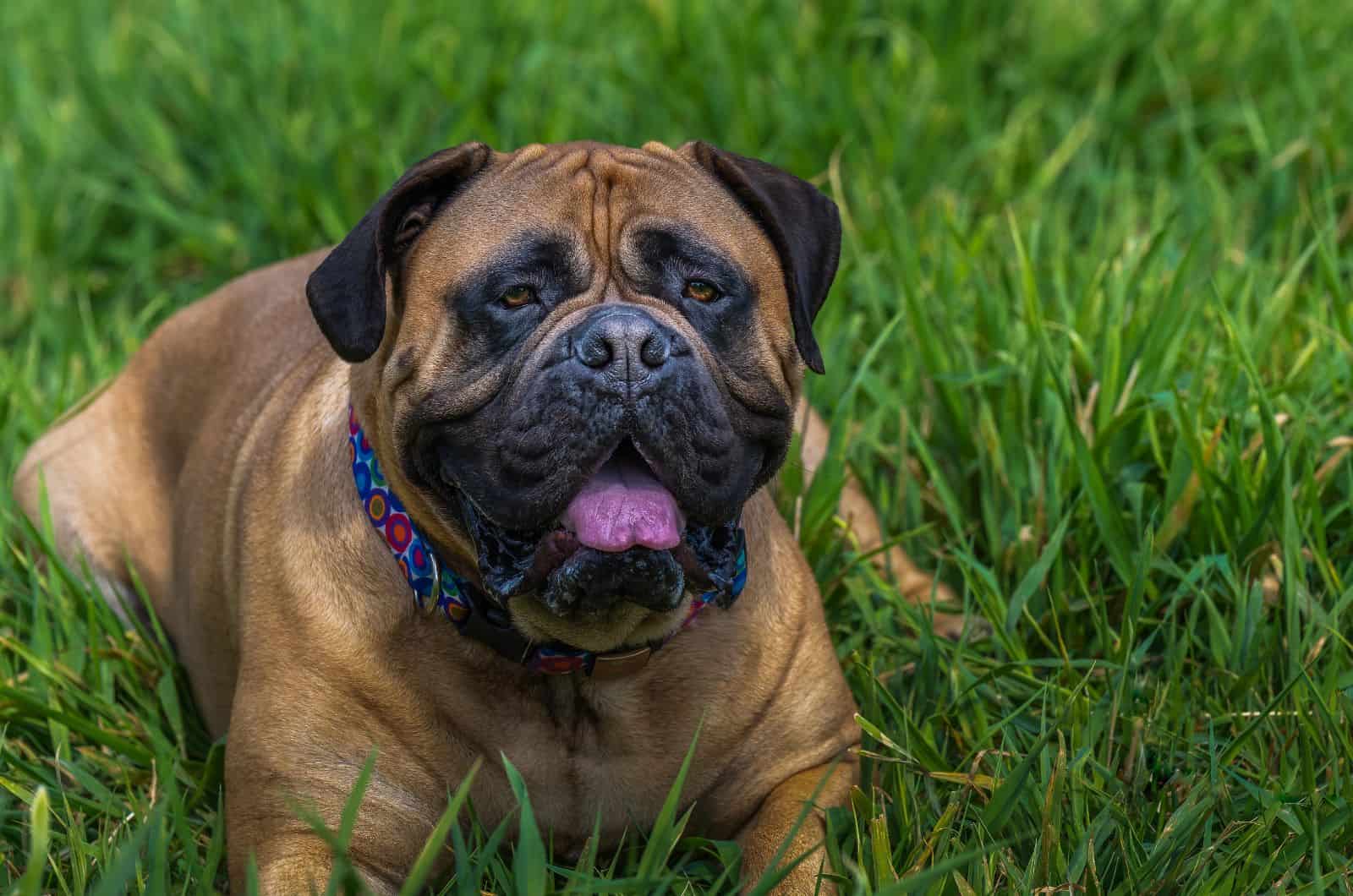
If you own one of these enormous dogs, the Bullmastiff growth chart is a great resource to have.
For people who are unfamiliar with handling large dogs, the size of a Bullmastiff might be a significant concern. They are not advised as first-time pets for inexperienced owners in large part because of this.
Bullmastiffs, despite their exceptional personalities, will nonetheless be a proper challenge to novice dog owners. Owning a Bullmastiff means having to do twice as much as you would for a smaller breed dog.
That’s why you should inform yourself about them in advance, and learn what to expect. Knowing the size of the dog will help you determine what accessories, food, and care are required for them.
With the help of this puppy weight chart, you can easily keep tabs on your Bullmastiff’s growth at any time by comparing the chart’s numbers to your puppy’s actual weight and height.
The size chart can also direct your efforts toward bettering your Bullmastiff’s health. Early detection of more significant health issues will increase your chances of successfully addressing them. Sometimes being underweight or overweight can be a sign of a more serious health issue.
